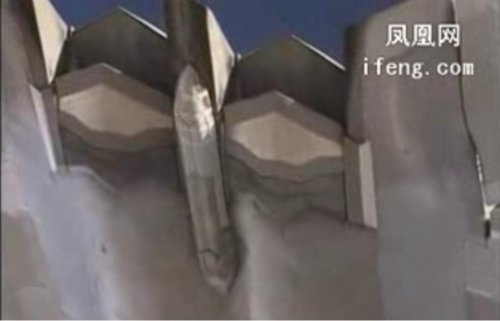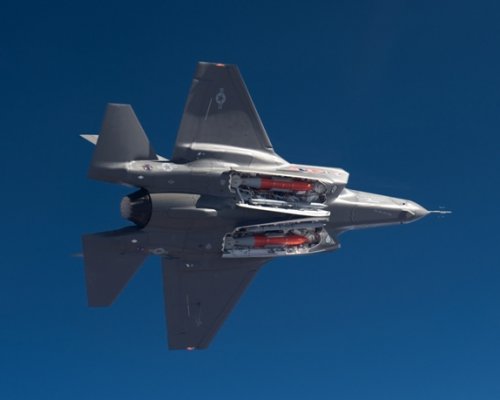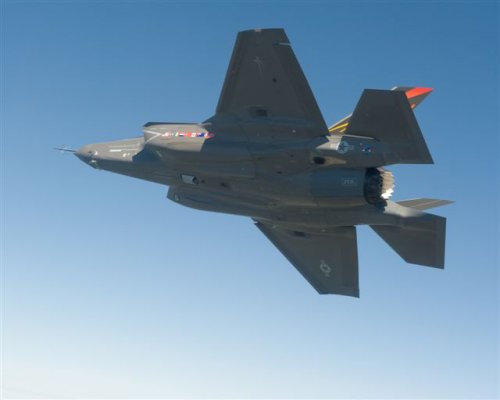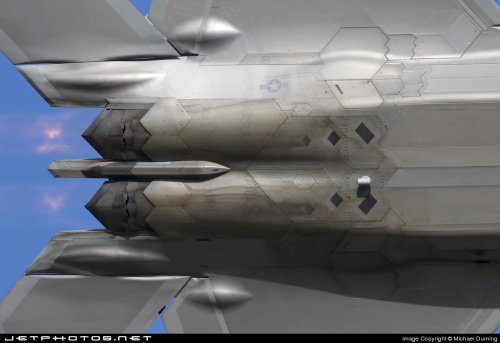Abraham Gubler said:
No one who's name I can mention here but very well clued into this area (very well). The physical size of the AAQ-37 DAS LRUs is much larger than AAR-56 MLD and similar units.
Ok, fair enough
Very difficult to asses resolution issues through released imagery as it is routinely downgraded (in resolution).
Agreed
But who will be first... Besides even I can admit that the F-35 vs F-22 argument is facetious. But with both being DASlike and JDRADM equipped who would score the most kills against FLANKERs from the merge?
My point is that by the time JDRADM becomes an actual deployable system (i.e. we do move away from traditional short ranged WVR missiles) the two platforms will have for the most part very similar capabilities avionic wise
F-35 has an advantage in being designed-in for DAS so space is provided for the larger camera units and the required processing and data fusion.
Agreed but as I mentioned earlier while the F-22 is suffering from DMS issues on some components architecturally the two jets are nearly identical and in fact the F-22 was intentionally designed for an easy hardware upgrade path. One big attraction of the JSF program was that it was leveraging technology from the ATF program and because of that common architecture the F-22 would be able to benefit itself and leverage the newer JSF technology for upgrade spirals of its own.
I don’t see nor have I heard that there are any technical obstacles for the F-22 upgrades and while the F-35 will certainly be more capable avionics wise “out of the box” than the F-22 is now, the F-22 PO is already moving on future increments and I do know that replacement of the CIPs and adding DAS/HMDS capability are part of those spirals.
DAS is currently (Block III) required to only identify and classify friendly aircraft, unfriendly aircraft and missiles. DAS will identify every moving target as a potential threat but throws out those that aren't in the requirements. The software can easily be expanded to include ground targets. I don't know why you think it can't ID aircraft alone, as long as it has enough pixels to tell the difference it will classify aircraft by type. DAS is designed to share components with EOTS but something outside the field of view of EOTS can still be classified as type of aircraft.
Yes it can classify tracks by type (aircraft, missile, ground vehicle etc.) and may even be able to further classify by subtype (fighter, transport, etc.) but I haven’t seen the ability to ID a target specifically (Su-27, F-15 etc.) attributed to it. All the information I’ve read indicate that it essentially blue force tracks and detects possible threats but cannot ID the target on its own. This is the essential point because despite all the wonderful technology that is now coming online in the next few years you will still have to transverse an ID matrix to authorize a BVR shot.
With the much more accurate and high resolution that AESA radars (via HRR NCTR for one example) and EW suites, they may now have be ability to EID to shoot on their own but I’m skeptical that the ROEs will permit a DAS only track will to be engaged. More likely you’ll have to have DAS + MALD track or DAS + EW etc. Certainly there may be a range where the resolution can discern a specific type of target but DAS is a near BVR system, 30-40km against a fighter sized threat and I’m very skeptical it can ID at those ranges. Thus in the a scenario such as postulated in the video where a couple F-35s are being intercepted from behind they may not be able to just shoot and keep running. Now again, don’t get me wrong, DAS is very impressive and is a major improvement but there is limitations.
There are many other uses for agility such as rapid response to new targeting, evasion, etc. But agility as an offensive tool? Especially when combined with very high SA including data link from AEW&C where most ATA combat will be brutal ambushes until the threat ever catch up with SA.
Fighter combat has always been about surprise, a fair fight such as a neutral merge or WVR combat in general are highly undesirable because of the traditional high unpredictability and historically even exchange rate. My concern with the F-35 as it’s been presented so far is that many of the capabilities, while very impressive, tend to be predicated on somewhat rosy assumptions that I’m not sure are a robust enough advantage particularly the way that fighter combat is trending; i.e. BVR CONOPS revolving around traits such as high, fast and low observable. The following are some challenges now and moving forward:
- Positioning for maximizing weapon’s kinematics and Pk WVR and BVR
- Constraints in certain mission sets may require you to defend the airspace and prevent contempt of engagement tactics such as blow through attacks (BARCAP, HAVCAP, escort missions etc.)
- Countermeasures, missile Pk and weapon capacity
- OpFor possessing similar capabilities or an unforeseen countermeasure
- Degradated SA: Network attacks, jamming and LO platforms employed by OpFor
An often used counter arugment to these concerns is stealth. Now I’ll be the first to say that I’m a big proponent of LO technology and I due appreciate its immense value but I also know that there are not only limits now but there will be an erosion in this capability in the future. How much is anyone’s guess. The F-35 will be in production for 20+ years and a system life of almost double that so its naïve to assume that the LO technology now will ensure near impunity 15-20 years down the road to the degree it does now. Not even the F-22 with its better signature and superior kinematics will be able to maraud around with impunity.
It is for those reasons and the way our force structure recapitalization is trending towards a lopsidedly F-35 centric force that gives me pause and raises concern. I have no doubt the F-35 will be a great jet but I think we (the US) are asking too much from a jet that was designed for a CONOPS predicated on support from other assets; assets of which we have too few.
BDF




